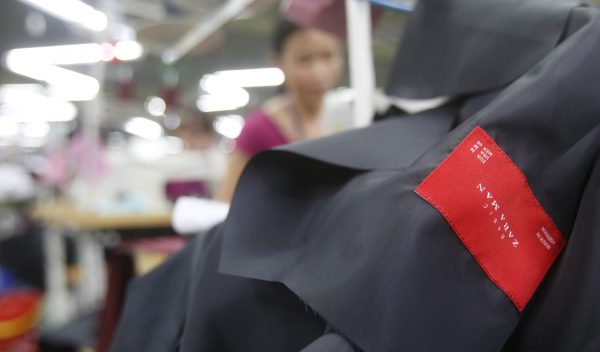The US election caught Hanoi by surprise. Vietnam was planning for a Clinton policy that remained tough on China, yet predictably status-quo. This would have allowed Hanoi to drive a harder bargain with its northern neighbour. A closer partnership with Washington would have been a bargaining chip. But nobody will wager on a chip with the Trump logo on it.
There was a strong belief that after the election Congress would pass the Trans-Pacific Partnership (TPP), President Barack Obama would sign it and president-elect Hillary Clinton would accept it as the economic architecture for much of the Pacific region for the remainder of the 21st century. Some still hope that President-elect Donald Trump will adjust the rhetoric of candidate Trump and come around on trade. But Trump reacts not to data or expert advice. He reacts to applause, and the TPP will not get him any of that among his supporters.
Is it worth salvaging the TPP as an 11 country agreement? The TPP comes with strings attached — each country must compromise in return for the benefits of membership. For Vietnam, these strings would have been painful for Communist Party control, especially with regards to the economy. Without access to the world’s biggest market and the security benefits associated with a Washington partnership, the costs may not be worth swallowing. Vietnam’s National Assembly recognised as much when it suspended the ratification of the agreement.
Vietnam is one of five TPP members without a bilateral free trade agreement with the United States. While early on in his campaign Trump aimed his criticism at China, he did bring Vietnam into his populist agenda over time. At one rally, he said that US workers now ‘compete directly against workers in Vietnam, one of the lowest wage countries on earth’. Vietnam cannot expect a favourable deal in bilateral negotiations with a Trump administration.
ASEAN centrality has been mentioned as a response to a US retreat. But if ASEAN couldn’t stick together in disputes with China when Washington was in the game, how will it stand up when things get even tougher? The Philippines, ASEAN’s next chair, surely won’t lead the way. Malaysia is already courting China and in Vietnam there were always factions who argued that Washington couldn’t be trusted. So China must be appeased, like it or not.
The lead role in economic rule-making is shifting to Beijing. Pragmatically, Vietnam will be better off in a China-led economic architecture than some TPP-lite. The Regional Comprehensive Economic Partnership (RCEP) may open up eastern Asia to freer trade, but its design lacks the comprehensive investor protections, limits on state intervention and other behind-the-border aspects of a free and fair trade and investment regime.
The Party leadership in Hanoi may be happy with RCEP if it is interpreted by China as an attempt to mend the broken fences from Hanoi’s all-too-obvious Western re-orientation. But the TPP was never wholly about trade. It was about forcing the leadership to implement what they didn’t have the courage to implement on their own. The TPP’s requirements — equal treatment of private and state enterprises as well as enforceable investor protection rules — would have brought a large boost in investment to Vietnam. As China becomes a riskier and more expensive place to do business, a more productive, legally safer and tariff-free Vietnam was bound to attract investors away from China.
Indeed, investment had been edging upwards in anticipation of the TPP. The number of licensed projects increased steadily to 2120 in 2015 from 1237 in 2010. Most of this money goes into manufacturing — leading countries of origin are South Korea, Japan and China. Their factories may serve their home markets, but they also seek out Vietnam as the cheapest place to produce and access the TPP market — which, importantly, includes the United States.
If the Trump administration continues its hard line on Beijing, investment will continue to trend away from China. But without the TPP, Vietnam is now only one in a pack of eager aspirants for new money flows. With no tariff advantage, manufacturers are free to compare notes on other low-cost locations, such as Cambodia or Myanmar.
To remain competitive, Vietnam must double down on the very reforms TPP was supposed to impose. The country must abolish the state-owned enterprise (SOE) preferences, focus on total-factor productivity and in-source higher value-added parts of the supply chain. But SOEs are popular for good reason: they can be used to buy public approval for local or central officials. And the political benefits that come with being able to direct jobs and investment where it is needed keep key constituencies happy. We shouldn’t expect Vietnamese officials to be less populist than a US presidential candidate.
The demise of the TPP removes exogenous pressure for Vietnam to do what it must to make an economic upgrade. Without this pressure and without US market access, Vietnam must work twice as hard to implement reform. And they will have to do it with China looming ever larger — an incentive that should encourage them to get the job done.
Thomas Jandl is a founding partner of TJMR Asia Consulting and a non-resident scholar at the Social Sciences and Humanities Department, Vietnam National University (VNU).
This article is part of an EAF special feature series on 2016 in review and the year ahead.

